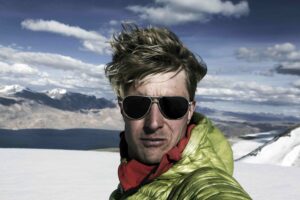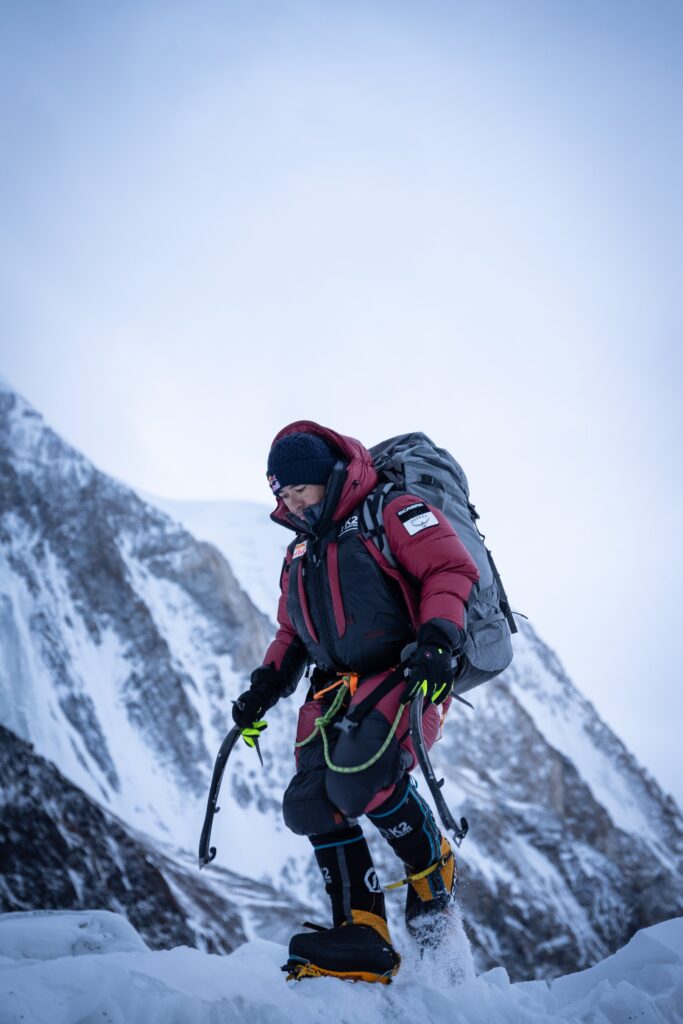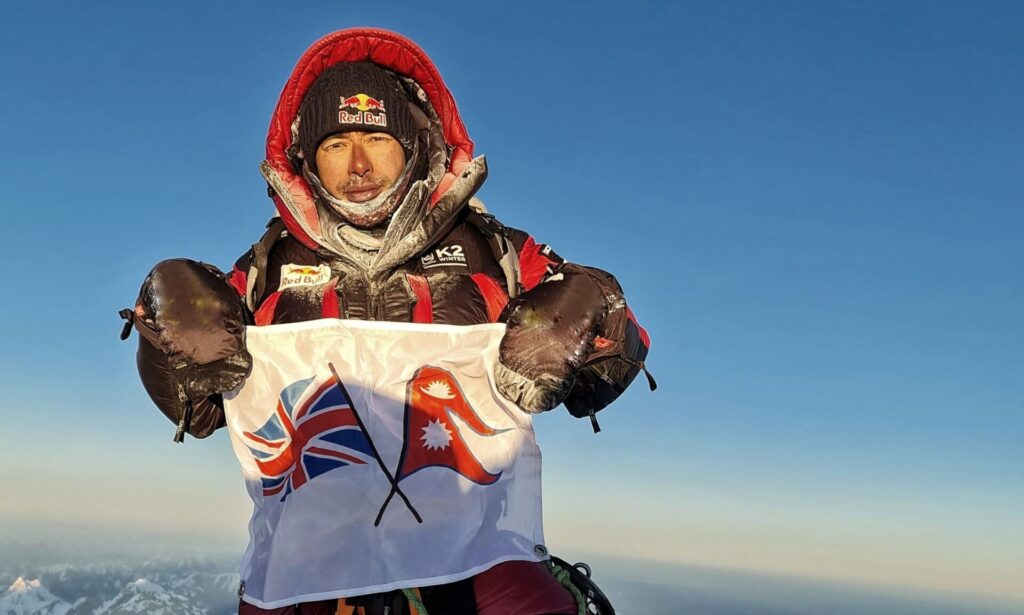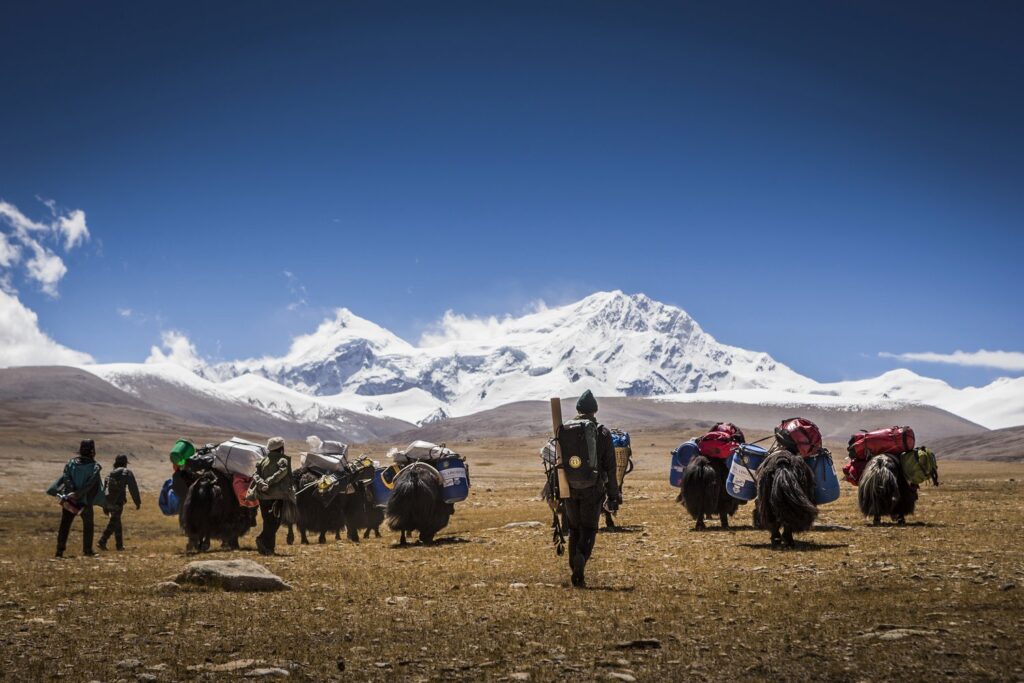Nirmal ‘Nims’ Purja is one of the world’s most successful contemporary mountaineers. Born in Nepal of Magar descent, Nims grew up in the foothills of the Himalaya. Before beginning his climbing career, he served with the British Armed Forces as a Nepalese Gurkha, and later entered the Special Boat Service (SBS), an elite unit of the Royal Navy. Today, after a decade of climbing in the world’s highest mountains, he holds many records that together have redefined what is possible in high altitude mountaineering. In 2019, in what he called Project Possible, Nims climbed all of the fourteen eight-thousand metre (26,247 feet) peaks in just over six months; the previous record was just under 8 years. In doing so, he was also the first climber to reach the summits of Mount Everest, Lhotse and Makalu in under 48 hours. In 2021, with a team of nine other Nepalese mountaineers, Nims successfully completed the first winter ascent of K2: a sort of ‘Holy Grail’ prize in high altitude climbing, which had seen multiple failed attempts at a winter ascent since the 1970s. In November of the same year, Nims launched his film 14 Peaks on Netflix which documented his Project Possible campaign. For issue 06 of BASE (published autumn 2021) David Pickford spoke to Nims about his extraordinary life on the roof of the world, the unique challenges of high altitude climbing, and the big issues facing the Himalaya today.
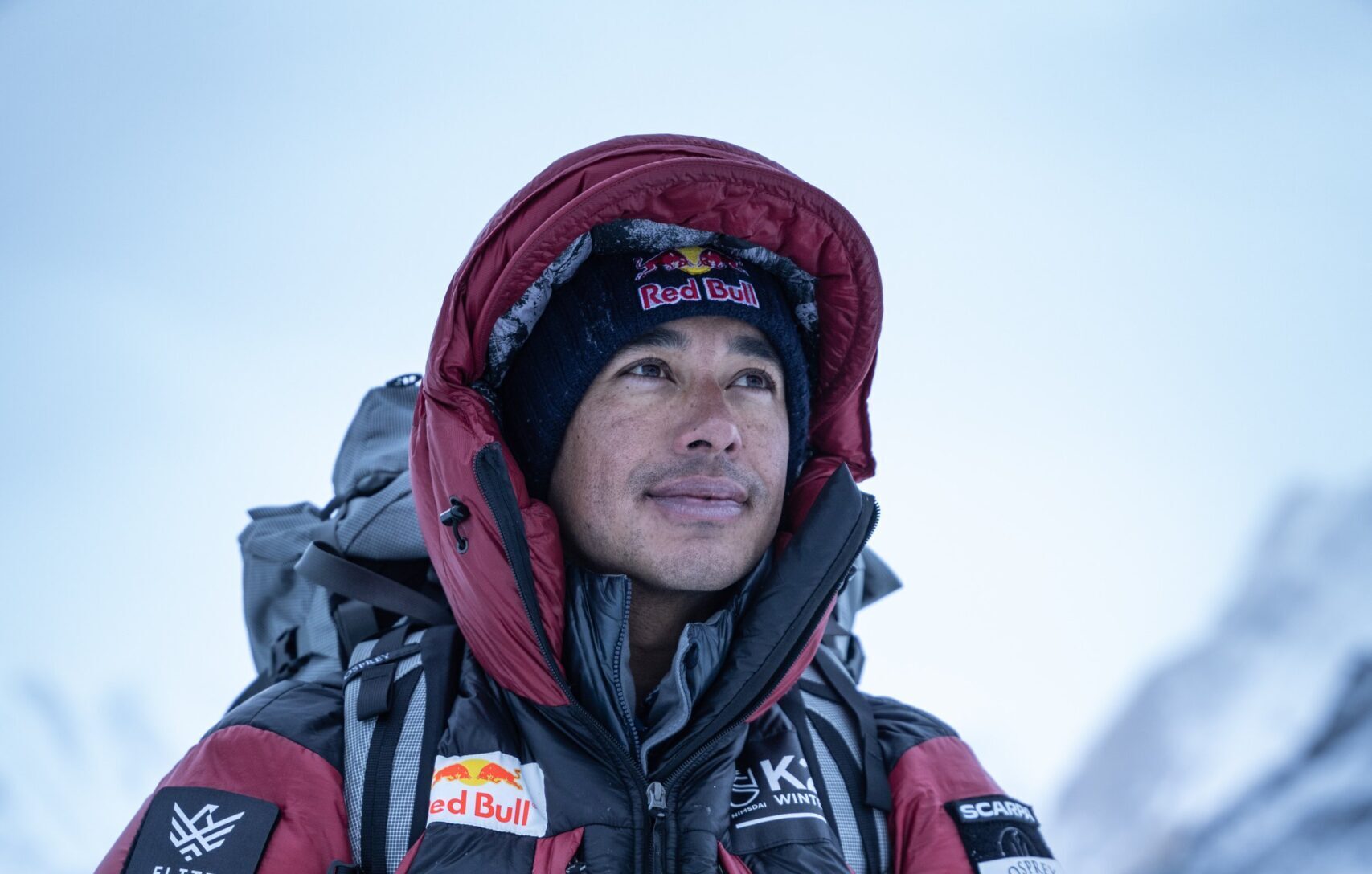
Nirmal ‘Nims’ Purja photographed during his 2021 expedition to climb K2, and the first expedition to ever reach the summit during the winter months. © Sandro Gromen-Hayes / Team Nimsdai
Prior to your career as a mountaineer, you served with the British Armed Forces as a Gurkha, and then you entered the Special Boat Service in 2009. What aspects of your experience in the military were useful for you in the mountains?
Most of the skills that you learn from the military are transferable. If you look at really successful people in the world it’s the same mindset- you wake up early, you’re super disciplined, you’re precise about the decisions you make and you have to have that positive mindset, determination and character. They are transferrable skills from one career to another – hence, what I learnt in the military was transferable to the mountain setting. The biggest thing that my Special Forces training taught me was to operate in very stressful environments and situations. You always have to make the right decision – and that’s the same on the mountains. That leadership is what I took from my military career.
What are the similarities between a military exercise and a mountaineering expedition?
Planning everything in great detail and anticipating what could go wrong. However, I must highlight that high altitude mountaineering is a completely different game to the military, not everyone who climbs mountains can be in the military and vice versa. You still need different skills to climb big mountains – that’s why most of the mountain guides take six years to finish their guiding course.
In 2012 you climbed Lobuche East (6,119m), which was your first major summit. Did you then realise that mountaineering would become a major part of your life?
Yes, although it wasn’t just about summiting Lobuche East. It was when we were trekking up past Namche Bazaar and I saw this gigantic peak – Ama Dablam – the most beautiful and iconic peak of the Himalayas. And from there we started seeing Everest and Lhoste – and it was such a happy environment for me, I was in my own happy bubble; the whole experience of going up into the Everest region made me want to climb more.
When I’m in the highest places on Earth, I become the most alive as I’m living only for that moment
You climbed Dhaulagiri in 2014, your first 8000er, in a very quick time. What are your memories of this expedition?
I figured out how strong I was because I pretty much trail blazed about 65-75% of the summit push. So those were the good memories I remember!
After Dhaulagiri, did you realise you were particularly well suited, both physically and mentally, to high altitude climbing?
Yes, I realised I could work with massive speed, which is a very big factor in successful high altitude climbing, and mountaineering generally. Obviously being in the Special Forces you had to be very fit but then I also have some special physiological advantages that mean I can operate at high altitude, so it was combination of those factors.
You began Project Possible — to climb all 14 8000ers in one year — in April 2019. Did you expect to complete it successfully when you started?
In March 2019 I gave up my military career, my pension and everything. This was a huge risk, but I have always believed that somebody had to do the challenge to show the world that nothing is impossible in terms of high altitude mountaineering. It was very tough because I only had 15% of the funding – no-one really believed it was possible, so the funding which was the main vital part of the project wasn’t there, but I flew to Nepal anyway because I always believed that once I started climbing in the manner I said I would, then people would believe that it was possible. Yes, it was a huge risk and I had to calculate that for myself and my team, but we managed to make it happen.
You climbed Shishapangma in Tibet in October 2019, successfully completing the final summit of Project Possible. How did it feel when you’d finished the challenge?
Of course, I was very happy that the challenge was completed, but as soon as I finished that I was straight into my second mission which was to buy a place in Kathmandu for my parents so they could stay under the same roof. My mum was staying in one room rented in Kathmandu and my dad was in Chitwan, so that was my next mission. It took some time but I was able to buy a house for them in Kathmandu so they could be together.
You broke a number of mountaineering records during those climbs in 2019. What was the hardest part of Project Possible?
The hardest part was definitely securing the funding. But in terms of the climbs themselves, that would be on Kangchenjunga where we gave up our oxygen at 8,450m to rescue two climbers. Only the people that understand the physiology of high-altitude mountaineering can only understand how tough it can be up there when things go wrong.
You often climb in the Himalaya without supplementary oxygen, but you did use it on Shishapangma. How do you decide whether or not to use oxygen in the world’s highest mountains?
Yes I always used oxygen from higher camps during Project Possible and it’s purely because we were breaking the trails, we were fixing the lines. For those people that don’t understand high altitude mountaineering, if you are trailblazing in waist deep snow and fixing lines with oxygen, that is way harder than if you are following without oxygen on a path that has been trailblazed and has fixed lines. And I can speak for both experiences, because I have done both.
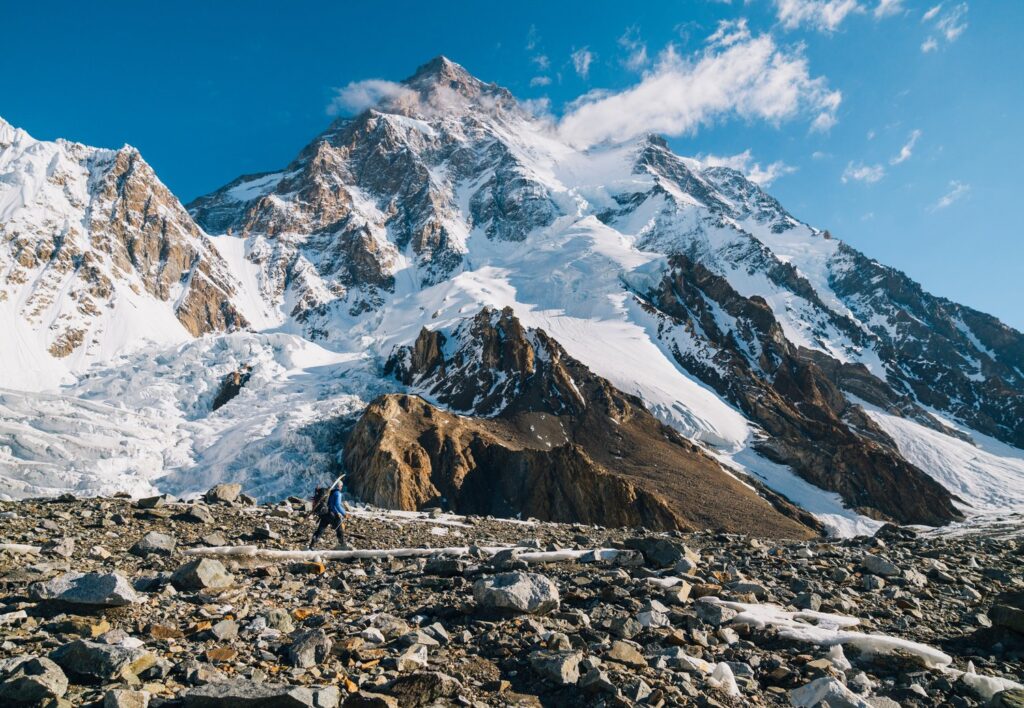
The awesome bulk of K2, seen from near basecamp on the Godwin-Austen glacier. The normal route up the mountain via the Abruzzi Spur is clearly visible on the ridge-line to the right of the summit. © Marek Ogien / Red Bull
In January 2021, you made history by making the first winter ascent of K2 along with nine other Nepali climbers. How did it feel to stand on the summit of K2 at the coldest time of year?
It was an incredible feeling, to have all ten of our Nepal team reach that summit at the same time was amazing. This was a team effort, and we are proud to have been part of the history of humankind and mountaineering – we wanted to show the world that anything is possible with a positive mindset, determination and teamwork.
Climbing K2 in winter is more challenging than climbing the other 8000ers in winter due to the extreme weather and high winds the mountain experiences. I recall that one of your camps was destroyed by a storm during your ascent, in fact. What was the toughest part of K2 in winter?
The weather this year was very challenging. We had the situation where the forecasts we were getting just didn’t match what was happening on the ground. As you mention, one of our camps was destroyed by the weather, and in that I lost my paragliding kit. I had planned to speedfly from the top of K2 but that wasn’t to be on that trip sadly.
The other toughest challenge was for me as expedition leader – because everyone knew that K2 in winter was the last, the hardest, the most extreme challenge left in 8,000ers, so, of course, every climber over there wanted to make a name for themselves and their country. So for me, the biggest challenge was to plan the whole expedition, whilst dealing with that pressure and expectation and to make sure I gave my team the best chance of being the first team of ten Nepalese climbers to be able to stand at the same summit after an historic ascent in the Himalaya.
You climbed K2 in winter without using oxygen – the only member of your team to do so. How much harder is it to climb an 8000er without oxygen?
With how the world is, there will be people that will always criticise no matter what you do. Before I did Project Possible no one believed that all 14 peaks could be climbed in just over 6 months, then I did it and people started talking about oxygen. Only those people that climb and who ‘walk the walk’ will understand.
For you personally, what are the key aspects of safe practice in the world’s highest mountains?
The key aspect of safe practise is being truly honest to yourself. If you push yourself because of ego and you push too hard to climb because other people have done it, and you’re not staying true to your ability then you will be in big trouble. Be honest with yourself and your ability.
There had been multiple attempts to climb K2 in winter since 1987, and all had failed. Was it a special moment to be able to stand on the summit with an all-Nepali team?
Of course! The Nepalese team have always been the pioneers of 8,000ers and for me to be able to lead this team and have all ten Nepalese members reach the summit of K2 at the same time was unique. I don’t believe in one man’s glory, I wanted everyone to feel a part of this great achievement, because everyone was working hard at the same time. Also, when we were on K2 it was a very bad situation worldwide with the pandemic, and I wanted to show the world the power of unification – we need to unite to deal with the bigger issues. That was the clear message I wanted to send across.
I don’t believe in one man’s glory. I wanted everyone to feel a part of the achievement of our winter ascent of K2, because we were all working hard together
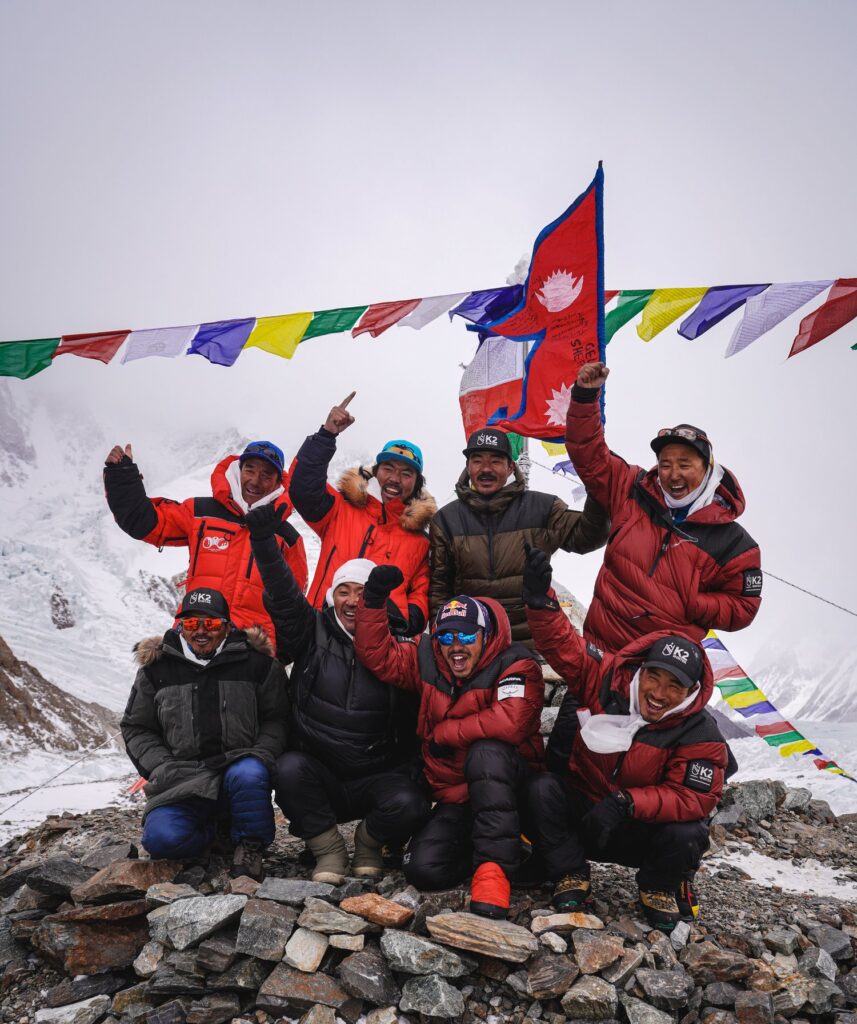
‘Team Nimsdai’ after the first winter ascent of K2. The group, who all summited the mountain together, consisted of Mingma Gyalje Sherpa, Nirmal Purja, Gelje Sherpa, Mingma David Sherpa, Mingma Tenzi Sherpa, Dawa Temba Sherpa, Pem Chhiri Sherpa, Kilu Pemba Sherpa, Dawa Tenjing Sherpa, and Sona Sherpa. Nims was the only climber in the team who reached the summit without the use of supplementary oxygen. At the summit, the temperature that day was -40ºCelsius, plus windchill. © Sandro Gromen-Hayes / Team Nimsdai
Do you think the current situation of Western companies operating guiding services in the Himalaya supported by Nepali Sherpas will change in the future? Will there be more Sherpa-run companies offering their own mountaineering packages?
Yes, even now, we can see it’s slowly changing, and I think in future there will be a good balance between the Sherpa-run companies and our foreign friends. At the moment it’s not balanced I must say that. But eventually there will be a fair balance between the Western European world and Nepal, so that it’s fair – and it’s clear it’s moving in that direction already.
What’s the best thing about climbing in the world’s highest mountains?
The best thing for me about climbing the world’s highest mountains is that I become truly alive up there. When I come down to sea level, it can be a crazy and very selfish world. But in the mountains I find my peace. When I’m in the highest places on Earth, I become most alive as I’m living only in that moment.
What are the biggest challenges at present for the people of Nepal?
The biggest challenges we have right now is obviously with the pandemic – and of course, it’s affecting the rest of the world. Hopefully the tourism in Nepal will return soon and we can hopefully get back to normality.
What are the biggest environmental issues facing the Himalaya?
Not only across the Himalaya but also across the world, global warming and climate change is the biggest threat. Most of the glaciers are melting and some are disappearing altogether. The bottom line here is that nature will always heal, but as a human race can we survive that? Can we heal? So that’s one thing we all need to bear in mind. I don’t think we will survive if we are not very cautious about it and if we don’t put our hearts into looking after our planet right now. This is the biggest issue in the world today and we have to act on it now!
This interview first appeared in issue #06 of BASE. Subscribe online or in print to read the full issue.
Don’t miss a single adventure
Sign up to our free newsletter and get a weekly BASE hit to your inbox
Other posts by this author
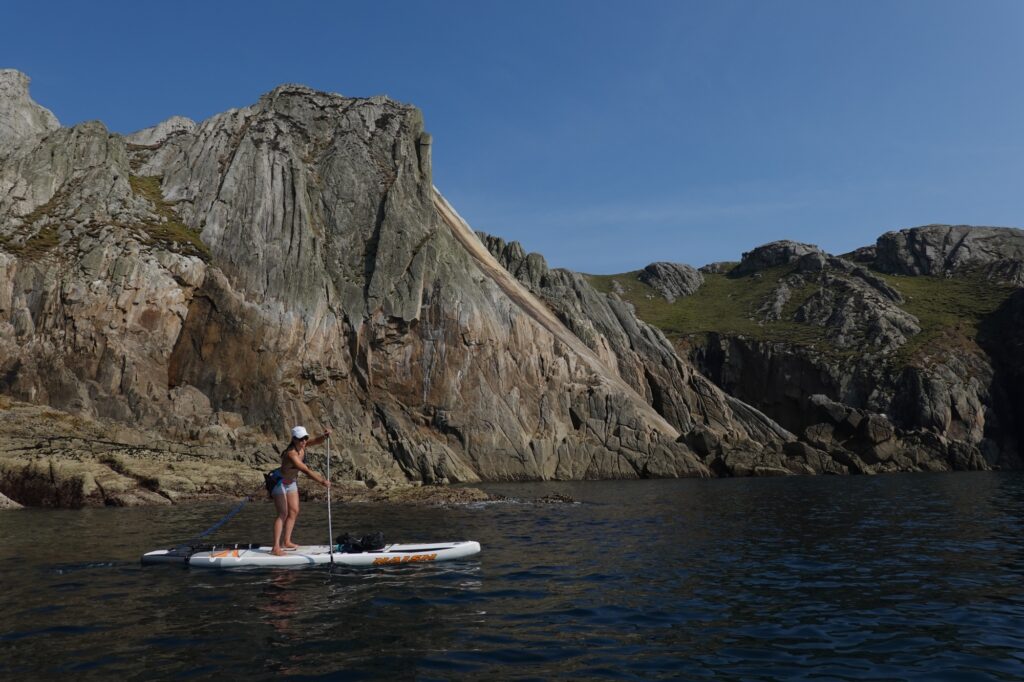
Story • David Pickford • Apr 12, 2023
West by Northwest: Lundy Island by Standup Paddleboard
An open-water SUP voyage from the north coast of Devon to the iconic island of Lundy
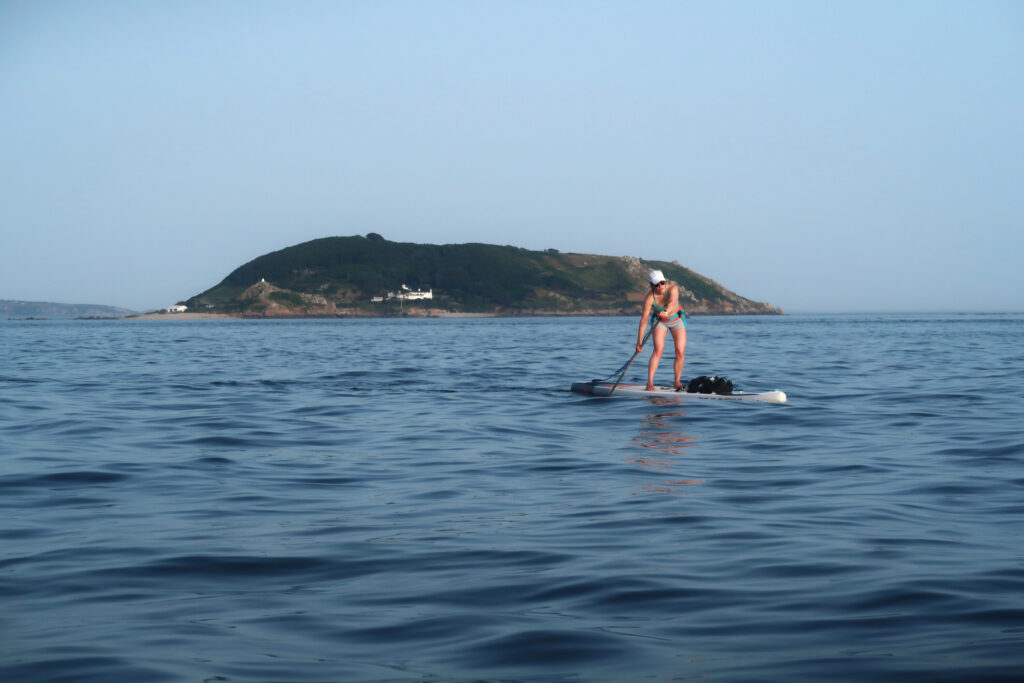
Story • David Pickford • Jul 24, 2022
Vectors in the Stream
A voyage between islands across some of the world’s strongest offshore tides
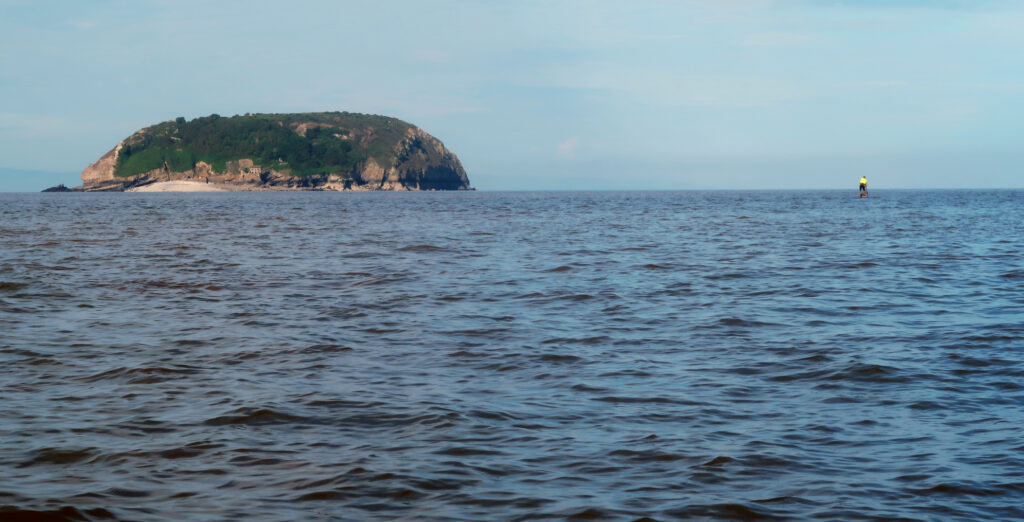
Story • David Pickford • Feb 04, 2022
Tidelands
Travels in the unexpected wilderness of the Bristol Channel
You might also like
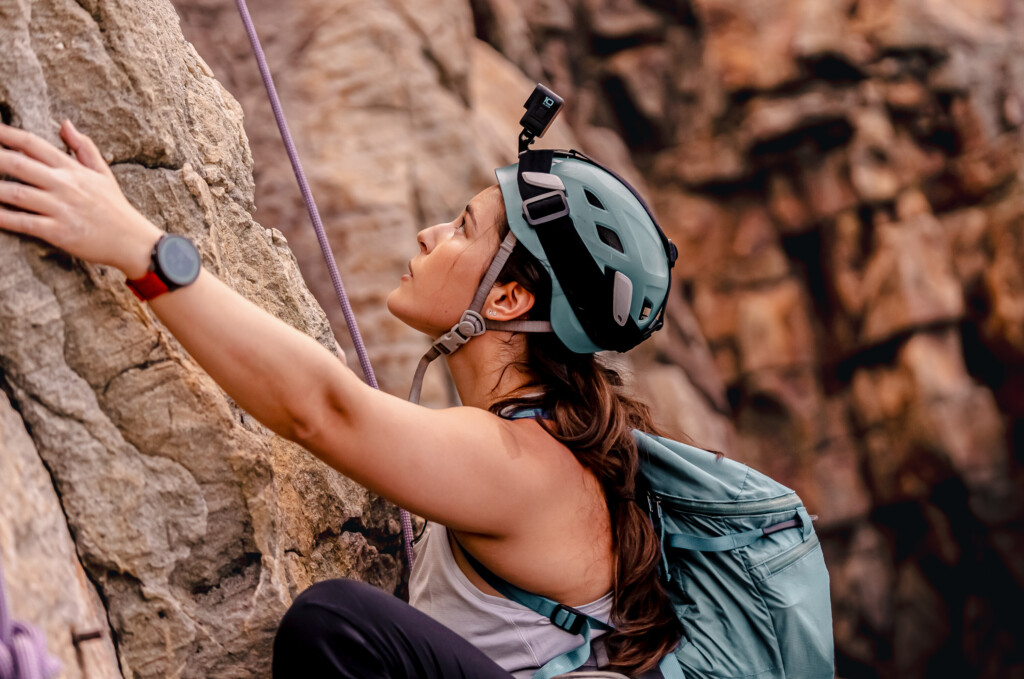
Photo Essay • BASE editorial team • Mar 18, 2024
Hunting happiness through adventure in Taiwan
BASE teams up with adventurer Sofia Jin to explore the best of Taiwan's underrated adventure scene.
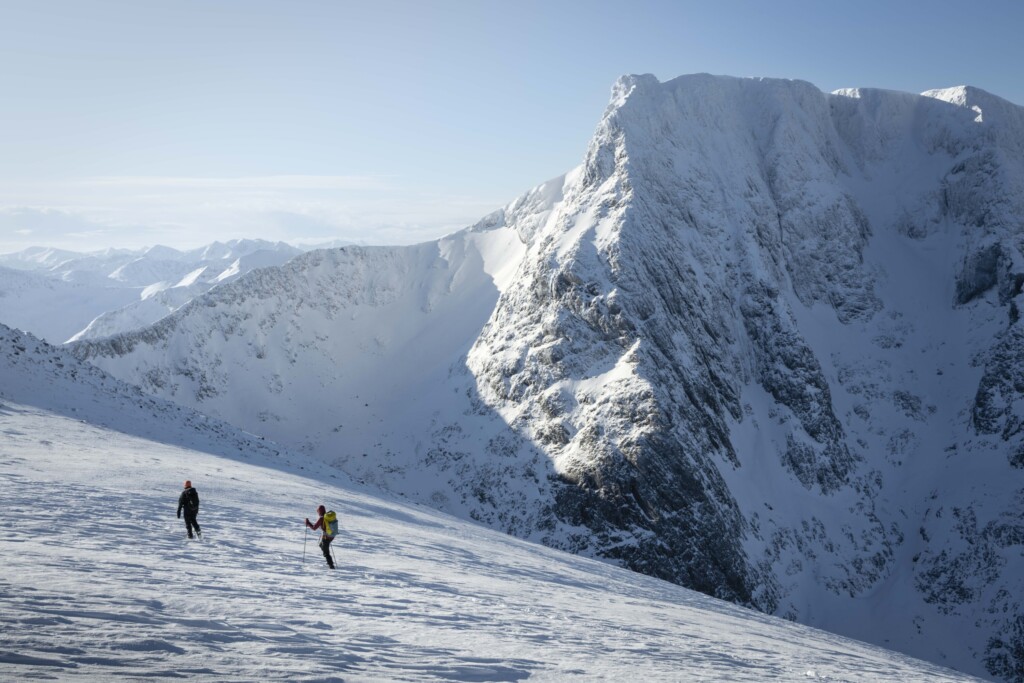
Story • BASE editorial team • Nov 21, 2023
Five Epic UK Climbs You Should Try This Winter
Craving a snowy mountain adventure? Inspired by the Garmin Instinct 2 watch (into which you can directly plan these routes), we've compiled a list of five of the best for winter 2023-24!

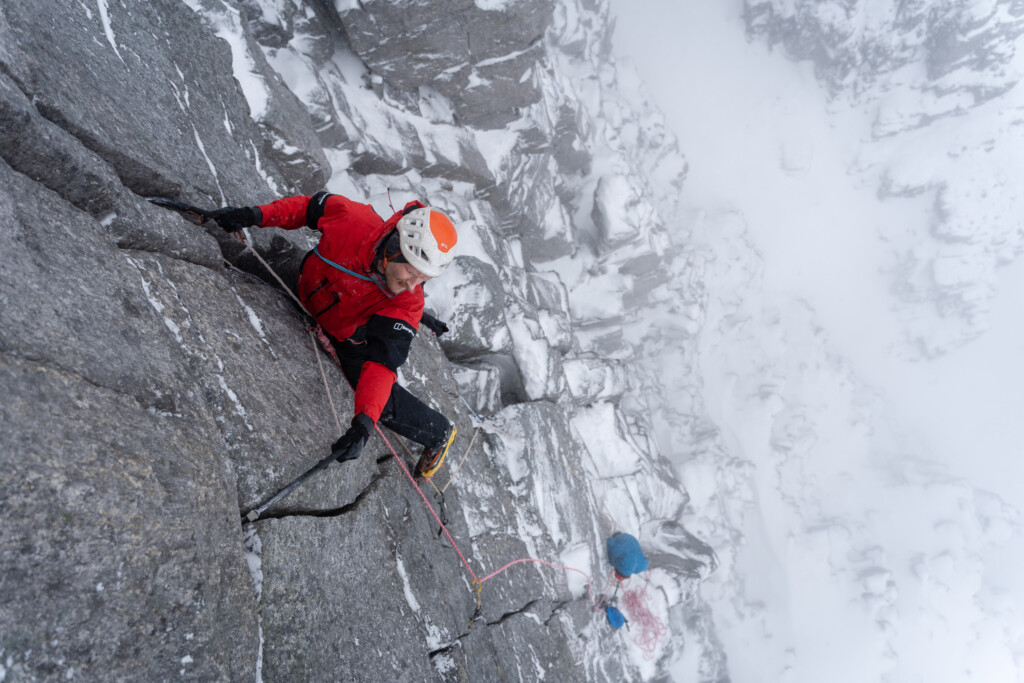
Video • BASE editorial team • Jul 21, 2023
Merging Two Lives: The Personal Journey of Hamish Frost
The challenges and triumphs of embracing sexuality in the outdoors
